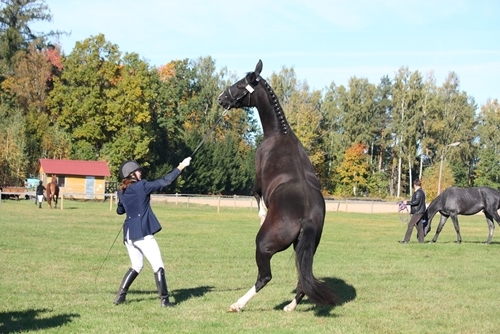Though a widely misunderstood trait, fear is an important aspect in horses. Long ago, it was essential for survival, and in many cases today, fear reactions may determine the equine activities in which a horse will excel. Still, fear responses such as spooking or shying can result in equine or human injury. To prevent problems, here’s what to know about a horse’s fear and how to calm their nerves.
Fear reactions versus fearfulness
There is a difference between fear reactions and fearfulness. Though all horses may exhibit signs of fear in various circumstances, some horses are simply more or less fearful by nature. Scientists call this the “fearfulness temperament,” which is consistent throughout a horse’s life, according to The Horse. Owners can discern a horse’s fearful temperament through behavior testing when the horse is at least 8-months-old.
Because they are prey animals, horses are evolved to be alert and fearful of sudden dangers. Instead of the fight-or-flight response that humans and other animals have, equines rely almost entirely on flight.
Curbing fear
Despite a horse’s fearful temperament, riders can reduce a horse’s fear and curb fearful behavior. According to a Minnesota State University Moorhead study, handling just after weaning offered substantial effects on fearfulness. When foals were haltered and petted each day, in the first 12 days after weaning, they showed less fear than control foals with the same handling three to four weeks after weaning. The foals in the first group demonstrated fewer notable reactions when split from the groups, exposed to a new object or approached by a human.
Providing a horse with social companionship is another way to diminish fear. Offer frequent feeding and regular sensory stimulation to mitigate scared reactions.
It is not clear whether fearfulness is genetic. However, there is reason to believe that being afraid is a learned reaction to a degree, as young foals that saw their mothers accept scary stimuli – such as opening umbrellas, plastic bags – had lessened fear reactions.
When horses demonstrate reactions of fear, experts say it’s best to help them approach the object. Though this may bring about more initial stress, it can help familiarize horses with jarring stimuli in the long run. With that being said, riders should never do something that will put them or the horse at danger.
Signs of fear
Recognizing the signs of fear in horses can help riders avoid potential problems. Telltale indications include:
- Lifting its head high
- Showing the whites of its eyes
- Flaring its nostrils








